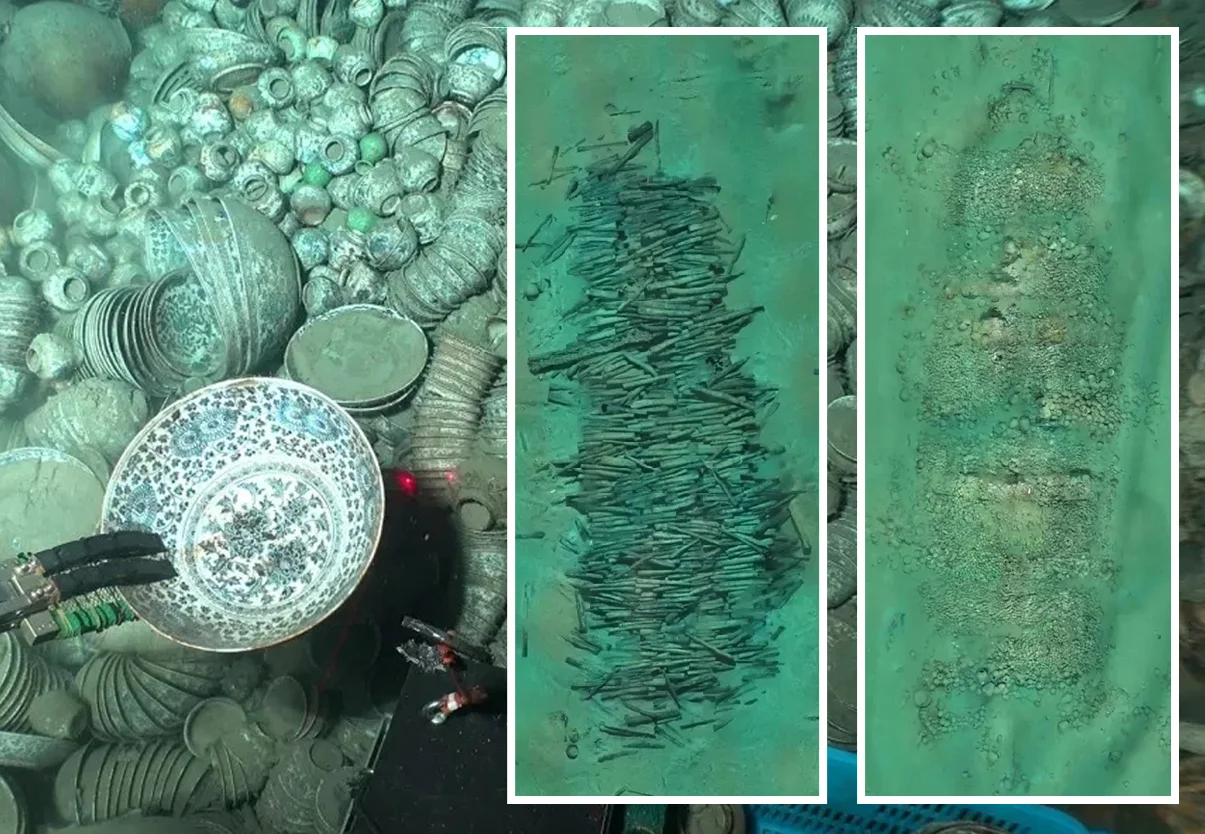The State Administration of Cultural Heritage has released an update on the current recovery efforts of two Ming Dynasty shipwrecks in the South China Sea.
The discovery of the two wrecks was first reported in 2022. They are located at a depth of 1,500 metres, less than 1.5 kilometres off the coast of China’s Hainan Island.
Both wrecks date from the Ming Dynasty (1368 to 1644) and were found to be carrying a cargo of hundreds of porcelain items, copper coins, and ornate pieces of ceramics.
Since 2023, a team from the State Administration of Cultural Heritage, the Chinese Academy of Sciences, and the China (Hainan) South China Sea Museum, have been working in collaboration to survey the wreck sites using remote controlled submersibles.
This has enabled the researchers to map the topographic and geomorphic characteristics of the seabed where the wrecks were located, and produce photographic mapping to produce a mosaic of each wreck site.
Using the “Deep Sea Warrior” manned submersible and the “Lionfish” unmanned underwater remote-controlled submersible, a total of 928 pieces of pottery, porcelain, and timbers from the wrecks have been recovered from the sea bed.
Most notably are ornately decorated Ming Dynasty fahua type vessels that were produced from the 14th century, both in Shanxi province, northern China, and in the Jingdezhen area of southern China.
An analysis of the cargo contents corresponds with the wrecks originating from Jingdezhen, known as China’s porcelain capital, as the city was also the site of the imperial kilns.
“The underwater archaeological work of the No. 1 and No. 2 shipwrecks on the northwest slope of the South China Sea marks an important milestone in the development of China’s underwater archaeology from the near sea to the deep sea,” said the State Administration of Cultural Heritage.
Header Image Credit : CASS
Sources : The Institute of Archaeology CASS





